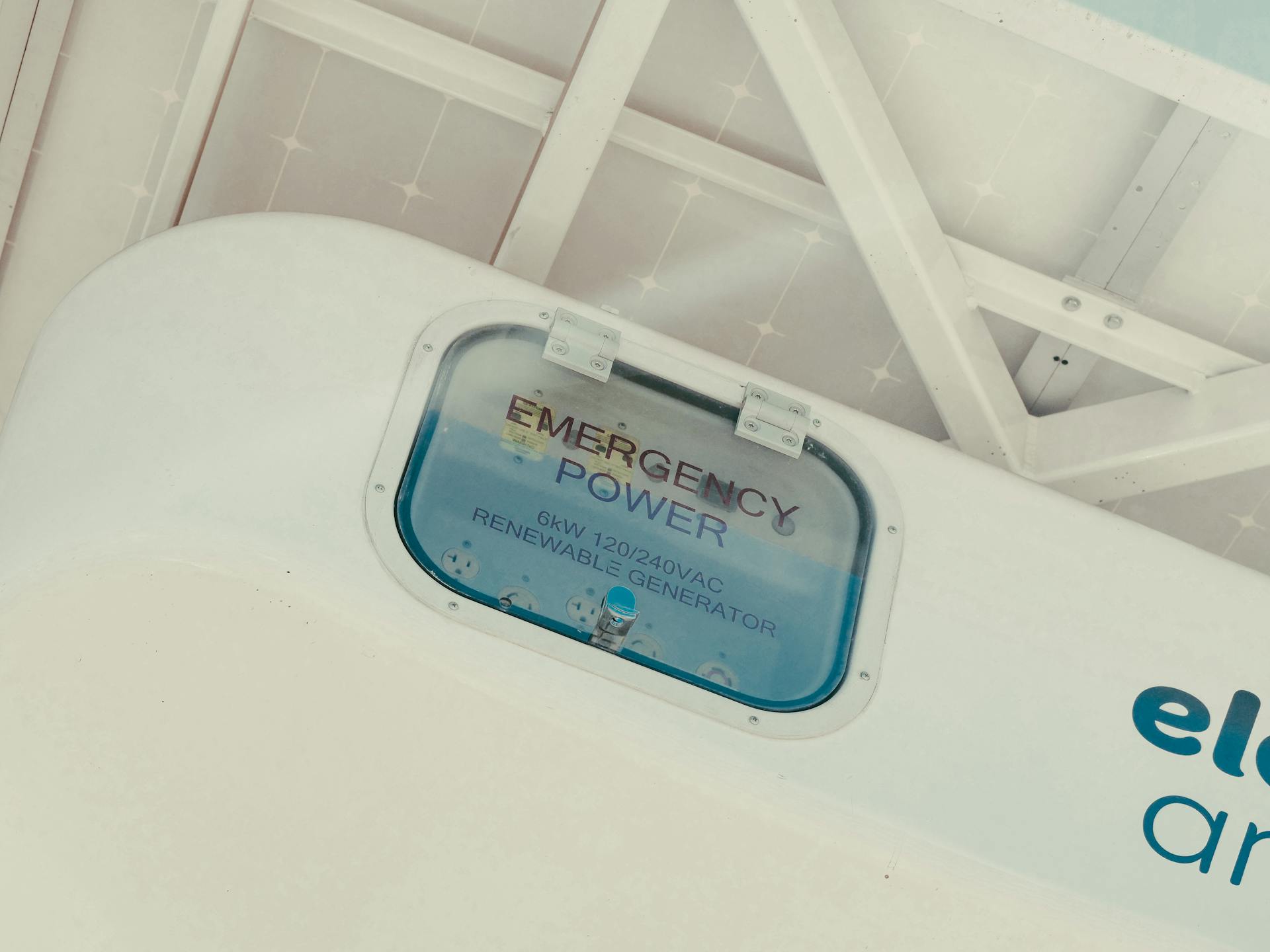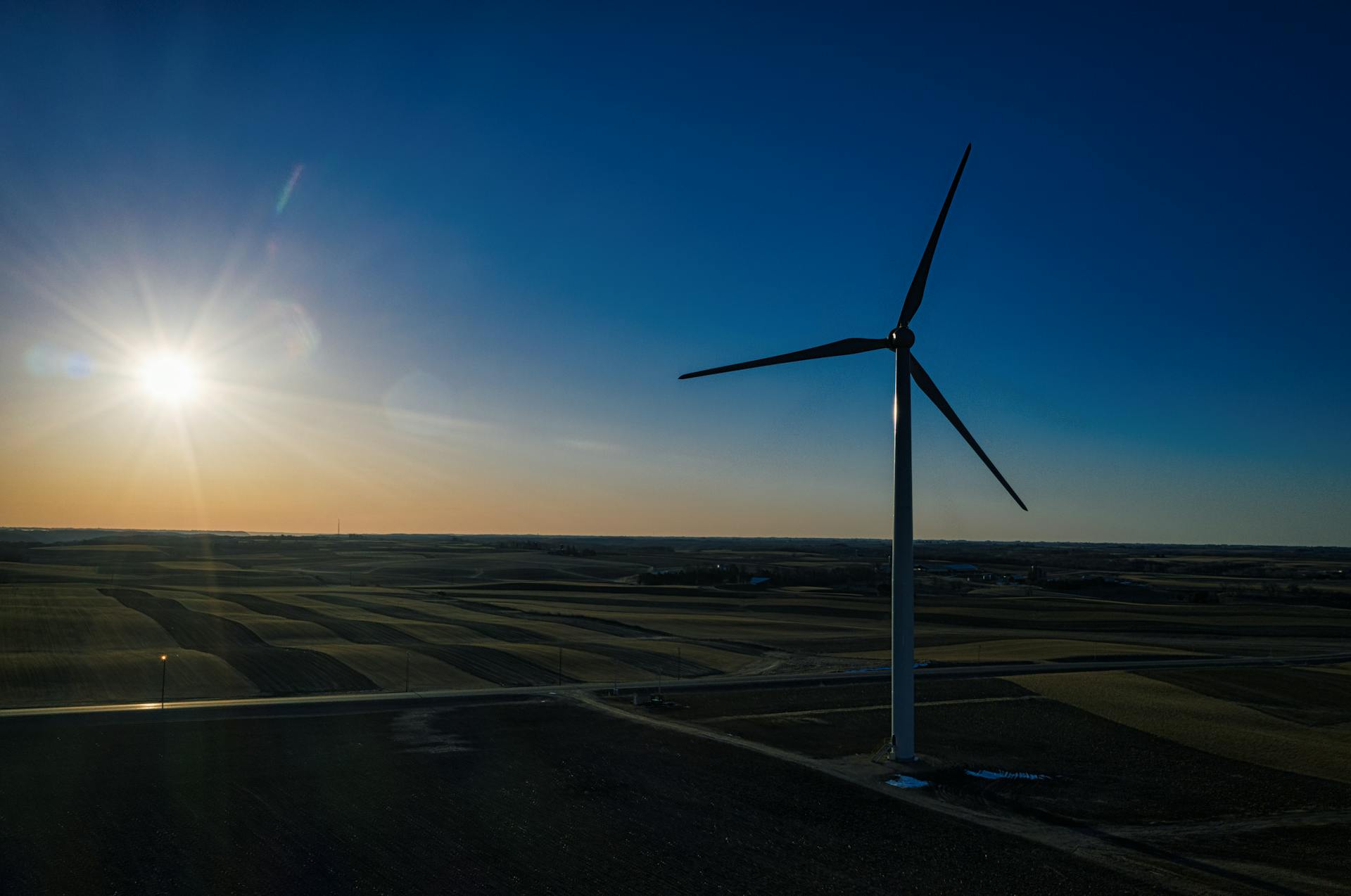
The Peltier Effect Generator is a fascinating technology that can harness environmental energy efficiently. It's a thermoelectric device that converts heat into electricity, making it a great option for remote or off-grid applications.
The Peltier Effect Generator uses the Seebeck effect to generate electricity, which involves the movement of electrons from one material to another due to a temperature difference. This process is reversible, meaning it can also be used to cool a device.
One of the key benefits of the Peltier Effect Generator is its ability to operate in a wide range of temperatures, from -50°C to 200°C. This makes it suitable for use in various environments, including cold climates and industrial settings.
The efficiency of the Peltier Effect Generator is around 10-20%, which is relatively low compared to other renewable energy sources. However, it's still a viable option for small-scale energy generation.
What Is Teg?
The Peltier generator, also known as a TEG, is a solid-state semiconductor device that converts heat into electricity.
It works by exploiting the Peltier effect, which involves moving heat from one side of the device to the other.
The TEG uses two different semiconductor materials to harness the Seebeck effect, which is a fundamental principle behind its operation.
This effect produces electrical energy when a temperature difference is applied across the device's two sides.
The TEG's internal structure is configured to utilize doped p and n semiconductors, which are essential for its functionality.
The product of the Peltier effect generator is a valuable DC power source.
It helps to remove or add warmth, especially for solid-state devices.
The electricity produced by the TEG is a result of the heat difference between its layers being converted into a usable DC power source.
How Thermoelectric Generators Work
Thermoelectric generators work by using the Seebeck effect, which occurs when semiconductors experience charge carriers moving within.
The Seebeck effect happens when an electrically conducting material develops an electromotive force between two points due to a temperature range difference.
Semiconductors with holes in doped p-type semiconductors and electrons in n-type semiconductors are used in thermoelectric generators.
The charge carriers tend to diffuse from the semiconductor's hot side, resulting in a buildup of all forms of energy charges at one end of the device.
This buildup generates a voltage potential that's directly proportional to the difference in temperature across the semiconductor.
To maintain optimal response, only one side of your TEG should be hot, and the counter side should be relaxed.
Here's a breakdown of the types of charge carriers used in thermoelectric generators:
Construction and DIY
You can start building a Peltier effect generator by placing two special semiconductors, P-type and N-type, with different electron power densities, in thermal contact.
The semiconductors should be electrically in series, with a thermally conducting plate on each side to join them. A ceramic conducting plate is a good option to avoid adding another insulator.
The semiconductors' free ends should be connected to a voltage source, allowing current to flow across the bimetallic junction.
This will create a thermal energy difference, where one side of the device takes up heat and moves it to the other side.
To build a DIY Thermoelectric Generator, you'll need a list of materials, which includes 10 candles, an aluminum tray, TEC, insulation tape, solder wire, an aluminum plate, an X-acto knife, Loctite, a voltage regulator, a soldering iron, and thermoelectric paste.
Here's a list of the materials you'll need:
- Candles (10)
- Aluminum tray (1)
- TEC (8)
- Insulation tape (1)
- Solder wire (1)
- Aluminum plate (1)
- X-acto knife (1)
- Loctite (1)
- Voltage regulator (1)
- Soldering iron (1)
- Thermoelectric paste (1)
Harnessing Environmental Energy
Peltier heat pumps can be used to generate electricity from the environment, harnessing the thermoelectric effect to convert heat into electricity with no moving parts.
These devices are commonly used on processors to keep electronic components cool, but they can also work in reverse to produce electricity.
A large heatsink is necessary to dissipate excess heat, and in a practical application, this could be buried in the ground to remove heat.
By placing a peltier element on top of the buried heatsink, it can be heated on one side by the sun, while a small black heatsink on top collects heat focused by a large mirror.
Expand your knowledge: Can a Ac Motor Be Used as a Generator
Alternatively, a larger heatsink can be placed inside a greenhouse, but it's essential to insulate between the hot and cold heatsinks to prevent the ground from being heated directly.
Peltier heat pumps are not a very efficient method of generating electricity, but at least the supply of energy is free.
Thermal Electric Generators
Thermoelectric generators work by using the Seebeck effect, which occurs when semiconductors experience charge carriers moving within. This effect is what generates a voltage potential.
The type of semiconductor used determines the charge carrier, with holes in doped p-type semiconductors and electrons in n-type semiconductors. The charge carriers tend to diffuse from the semiconductor's hot side, creating a buildup of energy charges.
This buildup generates a voltage potential that's directly proportional to the difference in temperature across the semiconductor. The voltage potential is what makes thermoelectric generators work.
You can even build your own thermoelectric generator using a few simple materials. Here's a list of what you'll need:
- Candles (10)
- Aluminum tray (1)
- TEC (8)
- Insulation tape (1)
- Solder wire (1)
- Aluminum plate (1)
- X-acto knife (1)
- Loctite (1)
- Voltage regulator (1)
- Soldering iron (1)
- Thermoelectric paste (1)
Components and Wiring
When you're working with a peltier effect generator, it's essential to understand the components and wiring involved. Typically, the black wire is negative, while the red wire is positive.
The TEC (thermoelectric cooler) wires need to be linked to the voltage regulator. Make sure to measure the voltage between TEC 8 and 4 to determine the correct polarity.
In some cases, you may find that the TEC pads are soldered with inverted polarity, resulting in a negative voltage reading. This requires a reverse connection to the voltage regulator.
To fix this issue, you'll need to make a reverse connection for the TEC pads to the voltage regulator. This will ensure that your TEC receives the correct polarity and can function properly.
The TEC plates should be covered with an aluminum sheet, measuring 160 x 120mm, to maximize heat transfer. Apply thermal glue to secure the aluminum sheet to the TEC plates and let it dry.
Related reading: What Size Inverter Generator Do I Need
Frequently Asked Questions
How much power can a thermoelectric generator produce?
A thermoelectric generator (TEG) can produce power ranging from 1 to 125 watts, but this can be increased up to 5 kilowatts with multiple TEGs connected in a modular system.
What are the disadvantages of the Peltier effect?
The main disadvantage of the Peltier effect is its low efficiency, which generates excessive heat that requires active cooling. This inefficiency can be a significant drawback for applications relying on the Peltier effect.
Sources
- https://www.wired.com/story/build-a-thermoelectric-generator-like-the-ones-that-power-deep-space-missions/
- https://www.wellpcb.com/blog/pcb-projects/diy-thermoelectric-generators/
- https://www.rmcybernetics.com/science/diy-experiments/electricity-from-heat
- https://thermal.ferrotec.com/technology/thermoelectric-reference-guide/thermalref13/
- https://www.powerelectronictips.com/thermal-electric-generators-principles-implementation/
Featured Images: pexels.com


